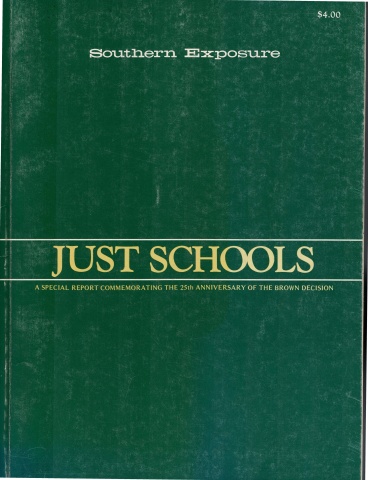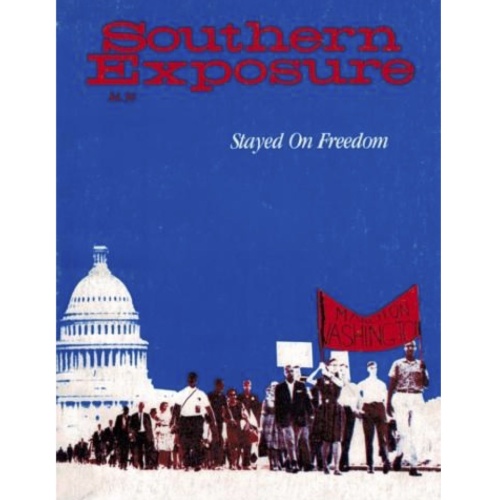New Orleans, 1960: “The Vilest Sort of Abuse”

This article originally appeared in Southern Exposure Vol. 7 No. 2, "Just Schools: A Special Report Commemorating the 25th Anniversary of the Brown Decision." Find more from that issue here.
During the last days of November, 1960, Reverend Lloyd Foreman and Mrs. James Gabrielle, who had continued to take their children to the Frantz school after one Negro girl began attending, were subjected to abuse and physical violence by the mob in front of the school. This, coupled with the fact that several parents in the Frantz school area had appealed to S.O.S. for help in returning their children to school, led to the organization of a volunteer “carlift,” run by parents from the uptown section of New Orleans, which transported the children to school in relative safety. The “carlift” began on December 1.
The car carrying Yolanda Gabrielle was [illegible] and manhandled by the mob. Later in the week, it was pur[illegible] for two miles by a truck which had tried to ram it. Until Wednesday, December 7, the drivers and the women who escorted the children in to the school were subjected to the vilest sort of [illegible] abuse from the daily-assembled crowds. On December 7, the police guarding the school pushed the crowd behind barricades a full block away from the school.
The crowd then dispersed to roam the streets of the Florida Housing Project, where many of the children live. Their parents were subjected to an organized telephone campaign of threats and abuse. Their houses and other properties were stoned, as was one of the mothers of a child at Frantz. The jobs of the fathers were threatened; four of them lost their jobs. James Gabrielle, ostracized by his fellow workers, quit his job and took his family to Rhode Island. The volunteer drivers were threatened with death, arson, disfigurement and other unpleasantness in a concerted telephone campaign. The police were unable to prevent these occurrences; and, with the exception of a couple of juveniles alleged to have stoned Mrs. Marion McKinley, no one connected with the demonstrations was arrested, nor was the mob in front of the school dispersed or told to move on.
The white enrollment at Frantz rose to a high of 23, but by February, 1961, fell to seven. The parents were, naturally, frightened by the threats levelled at them and at their children. On Deecmber 8, 1960, a list of all the volunteer drivers, together with a description of their cars and the names and telephone numbers of their owners, was circulated among the mob by the Citizens Council. Since several cars had already been attacked, the job of transporting the children to school was turned over to federal marshals, who also accompanied the Negro child to school.
A white child, son of John Thompson, an employee of Walgreen's, briefly attended McDonogh No. 19 in January, 1967. Whites picketed a Walgreen's store, and the chairman of the White Citizen's Council announced that a statewide picket would be set up unless the boy was removed from the school. On January 37, the complete white boycott of McDonogh was restored when Thompson withdrew his son from the school and moved his family out of the city .
-excerpt from The New Orleans School Crisis, prepared by the Louisiana State Advisory Committee on Civil Rights, 1961.
Tags
Southern Exposure
Southern Exposure is a journal that was produced by the Institute for Southern Studies, publisher of Facing South, from 1973 until 2011. It covered a broad range of political and cultural issues in the region, with a special emphasis on investigative journalism and oral history.
